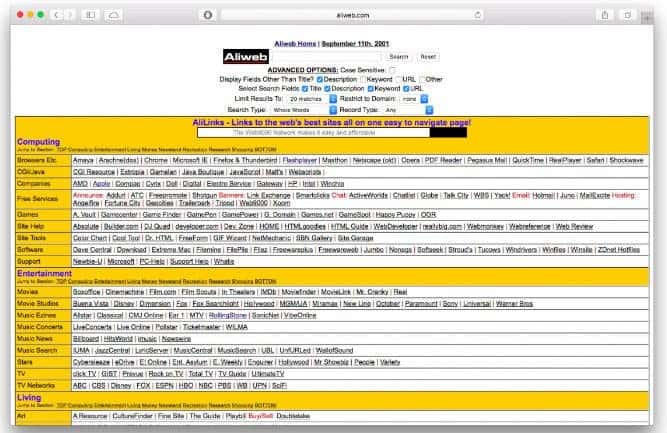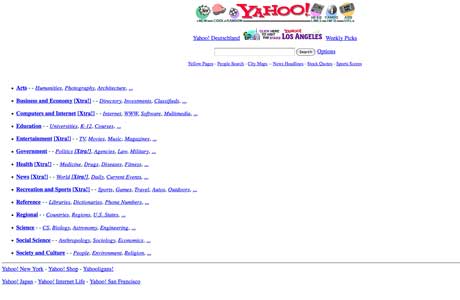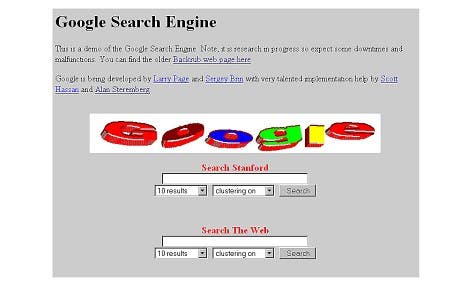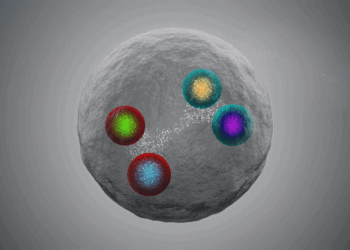Some 25 years ago, on December 1990, Tim Berners-Lee, then a scientist at the CERN facility in Switzerland launched what was the world’s first website – the forefather of everything that we today call ‘The Internet’.
The first website

Hosted by the World Wide Web (you know, the “www”) on Berners-Lee’s NeXT computer, the site was used by CERN researchers internally until August ’91, when it became available for everyone with an internet connection (which of course, wasn’t that many people).
It was mostly a ‘How To’ guide to the web, telling you how to access documents and set up your own server to share with others. In 2013, CERN made an effort and returned it to its original address, where you can still view it, although in a stripped-down form. Like most computer scientists working on the web in its early days, Berners-Lee believed functionality and clarity was much more important than graphics:
“Where facilities already exist, we aim to allow graphics interchange, but in this project, we concentrate on the universal readership for text, rather than on graphics,” he wrote in his initial proposal for the world wide web.
Internet history
Today, there are almost 1 billion websites and over 4 billion web pages, but things were very different in the good old days. In 1992, there were only a handful of websites, mostly university or research centers, and by the end of 1993, there were 623 websites, according to a study by MIT Researcher Matthew Gray. Many of them have been abandoned and mostly forgotten, but some still exists, and I’m quite sure you head of them.
Bloomberg and Wired were among these first 623 websites, probably the first online media companies; coincidentally or not, Wired’s website was also the first in history to allow banner ads.

IMDB was also launched in the 1993, hosted by the computer science department of Cardiff University in Wales. Perhaps the most interesting website launched that year was PARC Map Server, the earliest predecessor of MapQuest and Google Maps. PARC Researcher Steve Putz tied an existing map viewing program to the web – but unfortunately, it didn’t take off. The world’s first search engine, Aliweb was launched the same year also at CERN, but it had a very limited lifespan. You can still access it here.

By the end of 1994 the web was already starting to grow exponentially, and many of the big websites were launched. WhiteHouse.gov gave a sense of seriousness to the internet. Yahoo was also launched in 1994, dominating the web for many years. Several precursors of social media also emerged, with the notable example of Cool Site of the Day. The site had an incredible growth, attracting 20,000 daily visitors less than a year after its launch and the site’s founder, Glenn Davis, became a celebrity. But it wasn’t all the good stuff – the internet was brewing its own type of humor too: The Useless Pages was an example of early web humor, gathering bad or strange websites as opposed to good ones. Megadeth was the first band to have a website, and of course, Sex.com was also launched – spurring a 12-year legal battle for ownership. The internet was starting to take shape.
Other notable examples were Rant.com, the first news website (and print magazine) to offer serious news analysis while satirizing only real news stories, Birmingham City Council, one of the first government websites, and VirtuMall. Created by two MIT flatmates, VirtuMall pioneered shopping cart technology, online card payments sent via fax to mail order catalogs, created the first pooled-traffic site, and helped foster standards for security.

Google was launched in 1996, while Facebook, which today boasts 1.2 billion users, only came along in 2004, ten years after Yahoo.






